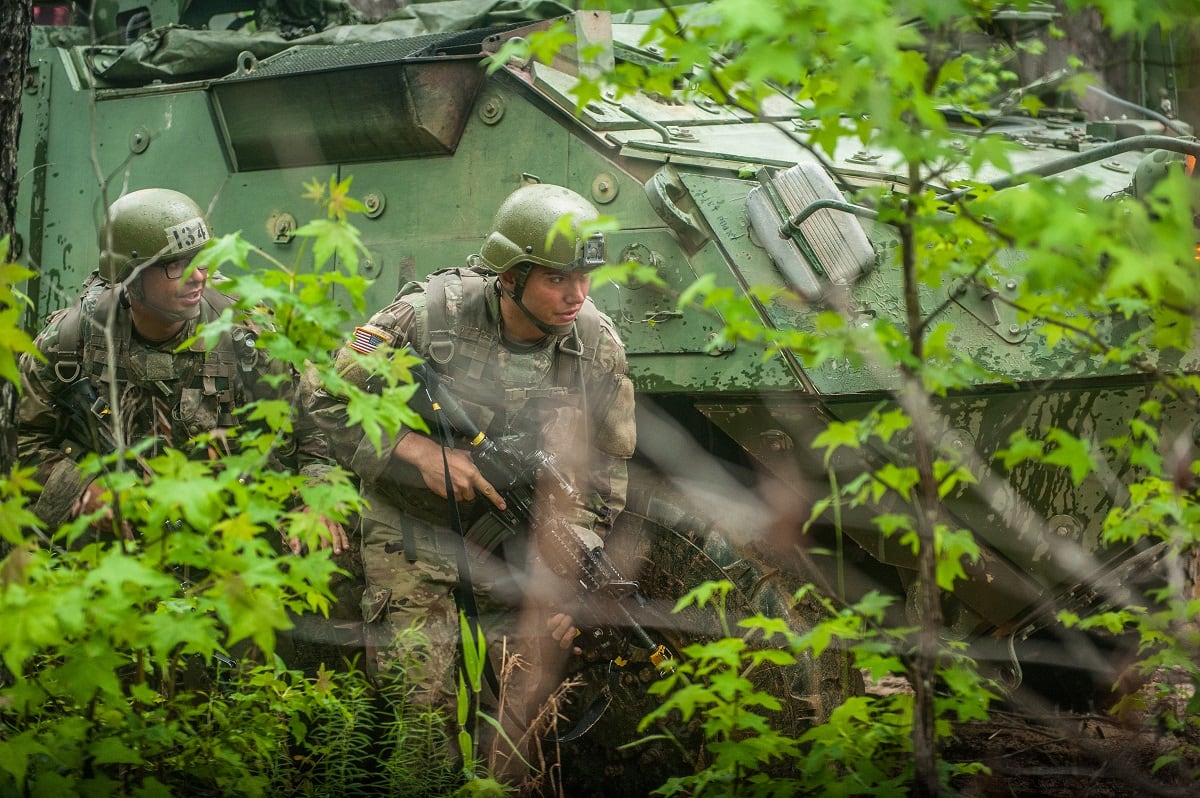FORT BENNING, Ga. — A little more than a year ago, the Army kicked off a pilot program that looked to add eight weeks to the infantry One Station Unit Training, all in an effort to make new soldiers more lethal.
At the time, Maneuver Center of Excellence commander Maj. Gen. Gary Brito said the goal was to build infantry soldiers that were combat deployable from “day one.”
Well, the numbers are in and new soldiers look to be hitting the mark.
In a briefing at Fort Benning, Georgia during the annual Maneuver Warfighter Conference in September, Col. Dave Voorhies of the 198th Infantry Brigade shared data from the first seven battalions that had completed the infantry 22-week OSUT by late August.
By this month, 10 battalions had completed the new 22-week course. They expect 18 by January and a total of 10 battalions and two brigades by next summer, Voorhies said.
RELATED

Average marksmanship scores by company are 35.5 and they are doing the new course of fire launched this past summer.
Their average APFT scores by company are 263 to 276.
The soldiers are showing a 98 percent pass rate on combat lifesaver, 96 percent pass rate on basic combatives and 97 percent pass rate for individual day and night land navigation.
They’re conducting 74 miles of foot marches in their period of instruction and a total of more than 100 foot miles marched in the course.
Each trainee has fired 2,475 live rounds by OSUT’s end. That’s compared to 1,355 under the 14-week model, Voorhies said. Their cadre-to-trainee ratio stood at 1:12 as of September.
The first pilot started in late July 2018 with graduation in December, with two companies of 400 soldiers at Fort Benning.
Some of the changes also reflect a more stringent attitude toward even basic training, the first nine weeks of a soldier’s life in the Army.
Then Sergeant Major of the Army Dan Dailey told Army Times in late 2018 that with what’s been added to basic training, the Army might extend it.
Basic training was upgraded at Fort Jackson, South Carolina to a program of instruction that was more heavy on fitness and discipline. That flowed, in part, from a 2017 survey of operational unit leadership by the Center for Initial Military Training that found both fitness and discipline lacking when new soldiers arrived at their first units.
CIMT officials told Army Times that leaders were seeing new soldiers that had a sense of entitlement, questioned orders and were not listening to instruction.
Starting this month, the Armor School begins its own 22-week OSUT pilot program, with plans to expand the program after a year to all classes.
Brito told Army Times last year that the next look would be at engineer training at Fort Leonard Wood, Missouri.
Todd South has written about crime, courts, government and the military for multiple publications since 2004 and was named a 2014 Pulitzer finalist for a co-written project on witness intimidation. Todd is a Marine veteran of the Iraq War.




